RAILWAY TIMES
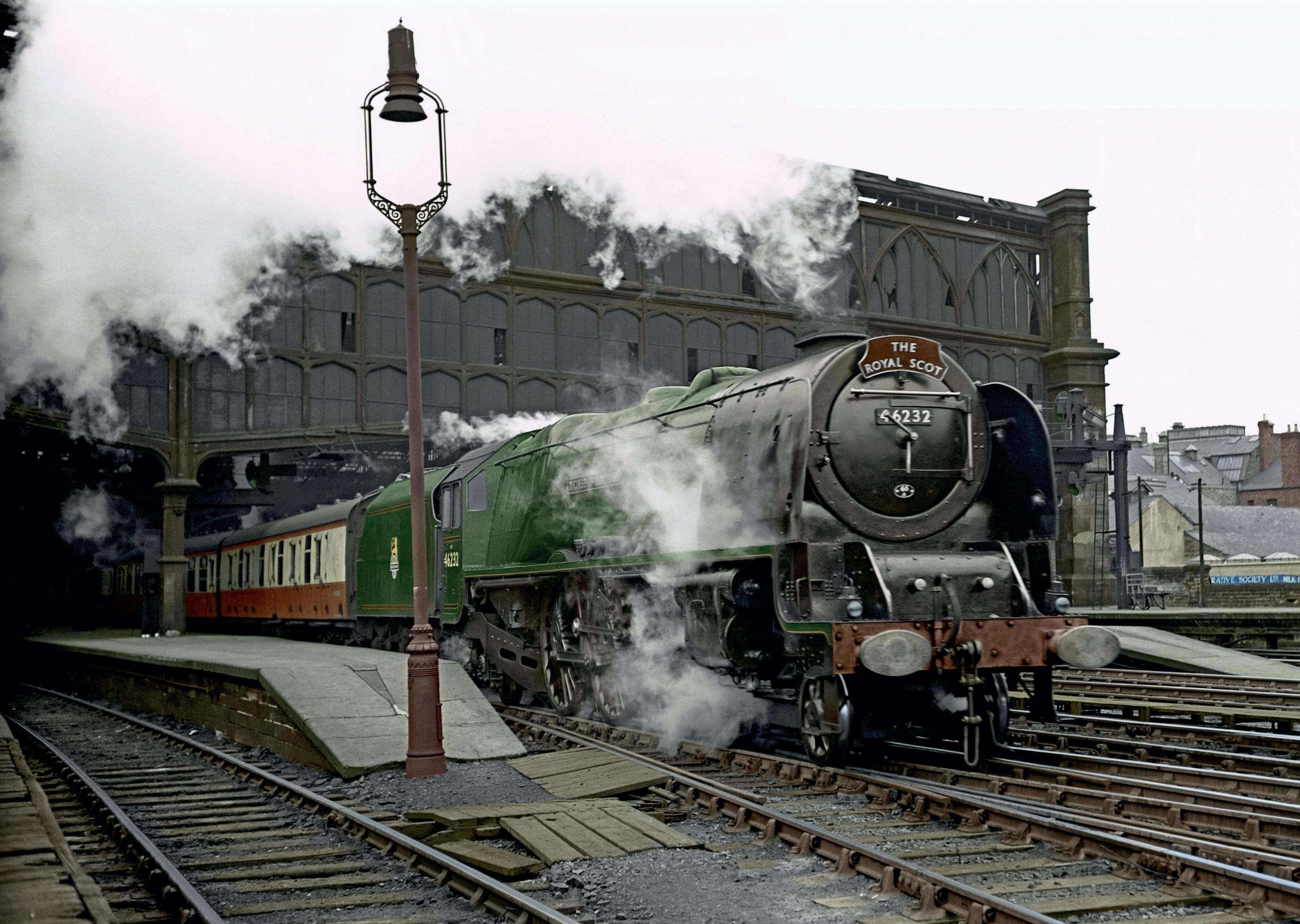
The history periodical featuring British Railways year by year
Issue No 5: 1952


The history periodical featuring British Railways year by year
Issue No 5: 1952
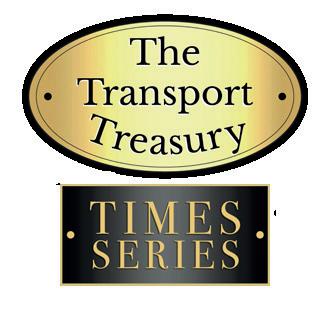
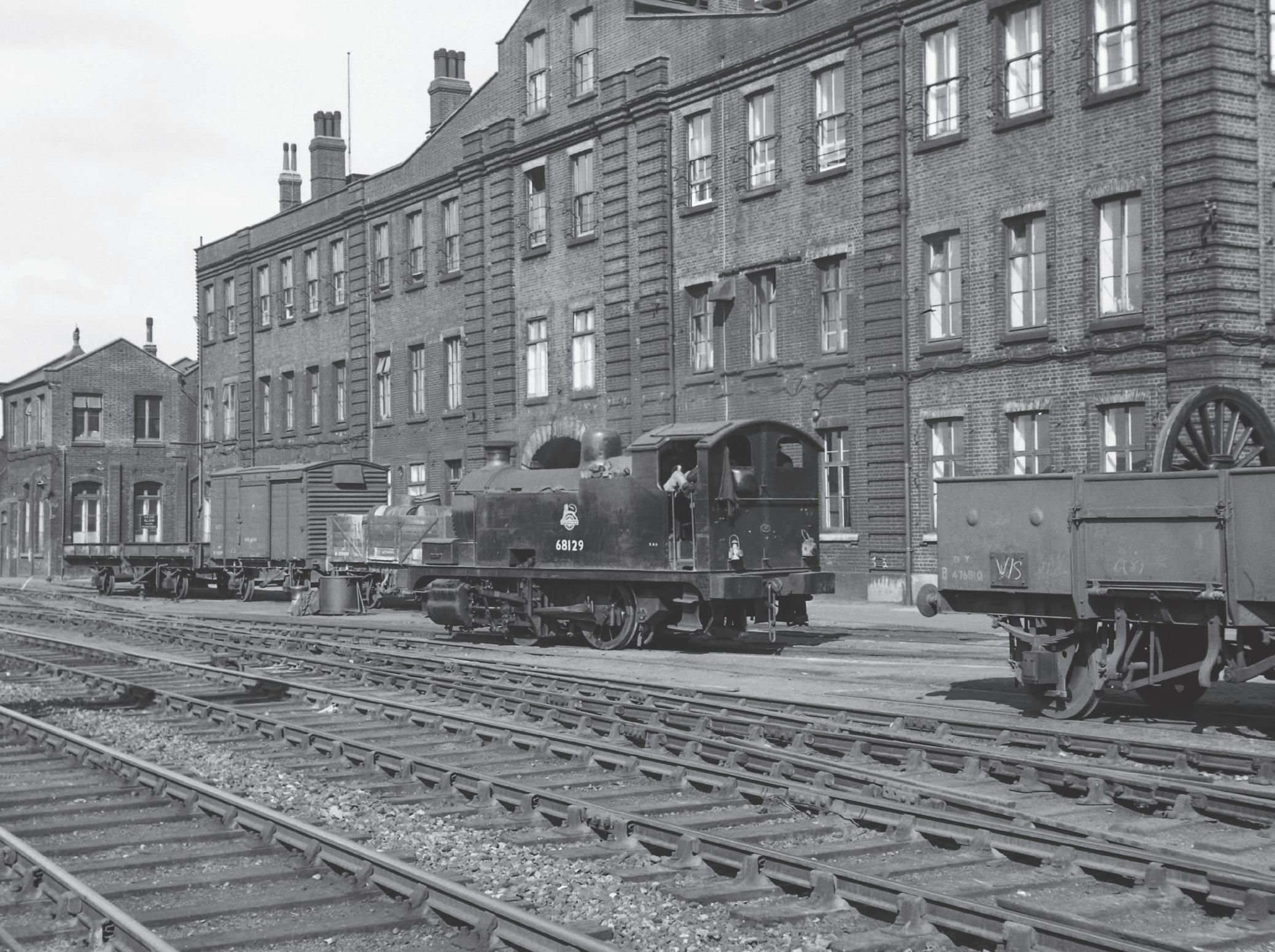
Class Y4 No 68129 takes a break between shunting duties at Stratford in September 1952 at the end of which month it became No 33 in the Departmental series, remaining in traffic until the end of 1963. AF 0491 / Transport Treasury
Bridgwater is the location of this 1952 image showing 0-6-0ST No 2194 Kidwelly well away from its former home on the Burry Port & Gwendraeth Valley Railway which had been absorbed by the GWR at the Grouping. Based at nearby Taunton shed, it had been found very suitable for shunting the lines in Bridgwater Docks but this did not ensure its longevity after nationalisation, being withdrawn in February the year following this photograph. NS 200139 / Transport Treasury


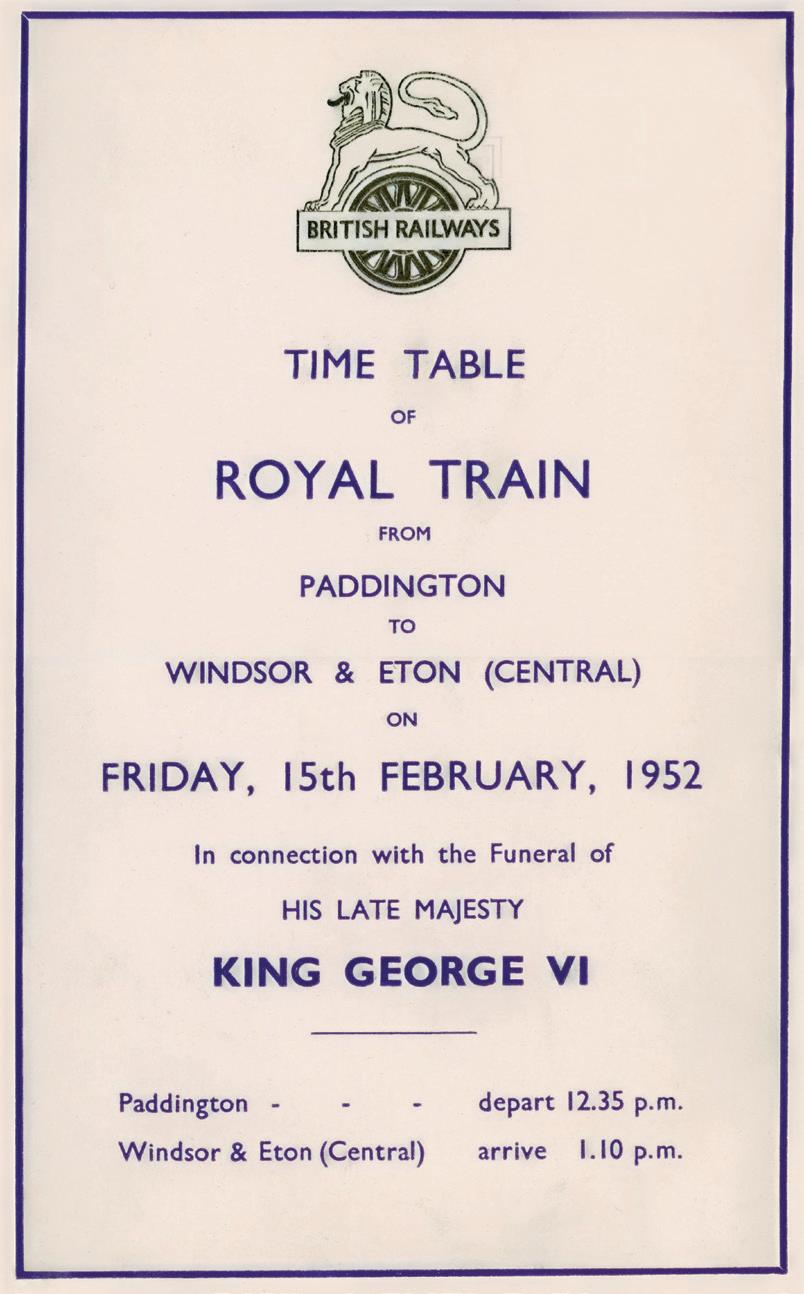

Thewhole nation was in mourning following the death of King George VI on 6 February 1952. His final journey from Sandringham to Windsor was to be accomplished by special funeral trains organised by the Eastern and Western regions of BR.
Three days before the day of the funeral the King’s body had been brought from Sandringham to Wolferton station on the Hunstanton line, the coffin having been placed onto a gun carriage of the King’s Troop Royal Artillery. The King’s brother the Duke of Gloucester and his son-in-law the Duke of Edinburgh followed on foot to the station whilst Princess Elizabeth and her sister Princess Margaret together with the Queen Mother followed by car. The Sandringham estate staff and their families followed in procession part of the way with the general public lining much of the route. Upon arrival at Wolferton the coffin was removed from the gun carriage by eight soldiers of the Grenadier Guards and placed into the carriage which had previously borne the remains of George V. The train pulled out of Wolferton at 12:05pm headed by Class B2 No 61617 Ford Castle rather than the traditional royal train locomotive No 61671 Royal Sovereign which at the time was in the Works for attention. Eleven minutes were allowed for the run to King’s Lynn where a reversal was necessary, this being accomplished in the allotted four minute turnround.
The onward journey to King’s Cross was in the hands of No 70000 Britannia hauling the nine coach train. The cab roofs of the locomotives were painted white for the occasion, this being a tradition of royal train locomotives. Britannia arrived at King’s Cross on time with the route’s signalmen having been duly warned of dire consequences should the path be impeded. Special instructions were issued that trains passing the funeral train should reduce their speed to 15mph, all shunting in stations and yards should be paused whilst the train passed, the public should be excluded from stations whilst the specials went by and that where possible quietness should reign for the passage of the special. On arrival in London the King’s body was taken to Westminster Hall where it lay in state. This was perhaps one of the first occasions, if not in fact the first, that a Britannia Pacific had appeared at King’s Cross. The fact that the Pacific had a larger water capacity than a B2 may have been a factor in
its participation as due to pw works the water troughs at Langley were out of use at the time.
The second part of his final journey involved the WR who organised the train from Paddington to Windsor on 15 February. The GWR predecessors of the WR had operated a similar funeral train in January 1936 for King George V and were well versed in the etiquette. Back in 1936 the train had been hauled by Castle class No 4082 appropriately enough named Windsor Castle. Although it had been intended to roster the same locomotive to King George VI’s train, having had a heavy overhaul a year before, upon inspection a week before it was considered that there was too much work needed to get it into the suitable condition that such an occasion demanded. So it was decided that a newer model should be used and No 7013 Bristol Castle, then just 2½ years old and which had been overhauled three months previously, stepped up to the task. In a nod to history it was decided to swap the identities of the two locomotives thus No 7013 became No 4082 and vice versa. Nameplates, numberplates and the plaque marking the 1924 Royal visit to Swindon Works were also swapped and this changeover became permanent until both locomotives were withdrawn in the 1960s.
On the day of the funeral a gun carriage procession from Westminster to Paddington delivered the body to the area between Paddington’s platforms 8 and 9 and various appropriate adornments were added to the station. Six special trains from Paddington to Windsor ran on this occasion with the funeral train departing at 12:35pm, reaching Windsor at 1:10pm. The royal family boarded the same train with other guests following in the remaining specials. As a mark of respect the RAF was grounded during the time of the funeral and on one transatlantic flight from London to New York, passing over Windsor at the time of the funeral, all of the passengers rose from their seats and bowed their heads. Thus successfully ended a meticulously choreographed occasion which involved substitutions of locomotives on both legs of the sovereign’s final journey. However, apparently the WR authorities were a little peeved that their loco swapping subterfuge had leaked out and become generally known at least amongst the loco spotting fraternity.
Opposite top: No 7013 Bristol Castle masquerading as No 4082 Windsor Castle passes Southall on 15 February 1952 with the funeral train from Paddington to Windsor. REV 63/A/2/4 / Transport Treasury
Opposite bottom: Courtesy Great Western Trust collection, Didcot
Continuing our series of the more unusual and bizarre happenings on BR during this year
SIR TOPHAM-HATT. The headgear of the ‘Fat Controller’ in the Rev. W Awdry’s Thomas the Tank Engine series no doubt led to his name although perhaps in these hypersensitive days he would not be ‘fat shamed’ by such an adjective. In 1952 rumours were abroad that BR would shortly be ceasing the provision of silk hats to stationmasters at principal locations. Rather, some revisions to this somewhat
archaic tradition have been proposed in that new silk hats will not automatically be provided to new incumbents once their predecessors have retired. Some additions to the principal stations list, which now numbers 26 in total, 10 of which are located in London, have been made in that Charing Cross, Birmingham Snow Hill, Bristol Temple Meads and Cardiff Central will now enjoy this privilege. The order remains that silk hats and morning dress should be worn by stationmasters on suitable occasions such as visits by royalty or other VIPs.

his ‘topper’, the Liverpool Lime Street stationmaster chats to the crew of D211 heading the ‘Red
EFFING (HAM) & BLINDING. The crew of Lord Nelson Class No 30854 Howard of Effingham no doubt let fly with a few choice expletives as their mount derailed south of Shawford on 20 July whilst working the 3:24pm stopping service from Southampton to Waterloo. At the convergence of a four track into a two track section the crew mistook the signals relating to the up main line for those relating to the up relief line, on which the 4-6-0 was travelling at the time. Realising their mistake too late the locomotive ran into a sand drag at 20mph, plunged down the embankment and turned over onto its side. Fortunately no passengers or crew were injured and although the tender was retrieved within a short time, initial attempts to lift the locomotive proved unsuccessful until, using jacks, it was tipped into a pit prepared alongside. Using Kelbus apparatus, in a manner similar to that employed in the Cocking derailment of the previous year (See article in Railway Times No 4) and a winch on a bulldozer, the recalcitrant ‘Nelson’ was pulled up the slope previously prepared some 10 days after the initial mishap.
1952 marked the centenary of two important events in the history of the GNR and of the opening of Brighton Works
In 1852 the GNR’s main line was completed with the opening, in August, of the ‘Towns Line’ between Peterborough to Retford via Grantham and Newark and, in October, of their new London terminus at King’s Cross. A centenary exhibition was held in Grantham at the Guildhall, opening on 28 July 1952 whilst the ‘Towns Line Centenary Exhibition’ opened at Retford in September 1952.
The exhibition was opened on Wednesday 24 September by Sir Ronald Matthews, the last chairman of the LNER who travelled by train from King’s Cross to Retford hauled appropriately by the locomotive which bore his name, No 60001 stopping en route to pick up civic representatives of ‘the Towns’, at Peterborough, Grantham and Newark.
Another centenary marked this year was that of Brighton Works which had opened in 1852. To mark the occasion a special all Pullman train from London to Brighton, to a 60 minute timing, was organised by the RCTS for 5 October headed by Brighton Atlantic No 32424 Beachy Head Some 300 tour participants visited the shed and works and Terrier No 32636, the oldest locomotive on the Southern Region, operated a shuttle to Kemp Town. The tour was repeated on 19 October. All this for 22/6d (£1.22½p)!
The ‘Centenaries Express’, organised by amongst others a certain A F Pegler, ran from King’s Cross to York and return on 28 September headed by No 60007 Sir Nigel Gresley with a scheduled time of 3 hours 15 minutes which was the fastest time attempted since 1939 which in fact it bettered by 1½ minutes, achieving a top speed of 87½ mph travelling up grade at Little Bytham.
The Centenaries Exhibition was held at King’s Cross from 13 to 18 October, the station having opened in 1852. The frontage of the station was floodlit and two preserved GNR locomotives, No 1 and No 251, were on show having been brought to London from the railway museum in York. World steam record holder No 60022 Mallard was also on view and completing the illustrious line-up were a GNR dining car and a modern BR kitchen car.

Awaiting departure time at King’s Cross is A4 Pacific No 60007 Sir Nigel Gresley adorned with a commemorative headboard. OTA 20994
Brighton Works also celebrated its centenary in 1952 and this view taken from a favourite location of railway photographers, Howard Place on the chalk hillside, looks out towards the substantial Works buildings. An unidentified mogul is seen backing out of the station whilst a Schools class 4-4-0 is parked on one of the shed roads. LSDC 3766

The first 20 of this new tank engine class were constructed at Swindon between April and December 1952. These were followed by 25 more produced between 1954-5. The first 10 were delivered to Tyseley, with seven going to Exmouth Junction and three to Eastleigh. The first examples were withdrawn in 1964 although two lasted in service on the Southern Region until July 1967.
This Standard design was essentially a hybrid of the LMS Ivatt class introduced in 1946 and the standard GWR boiler design used on the large prairies of the GWR and on the 56xx class tanks, although the boiler of the Standard class locomotive was slightly shorter than that used on the GWR. The use of a GWR boiler design was decided upon as there was no suitable LMS boiler design which would enable the
weight restriction, for which the locomotive was designed, to be achieved.
It had been the original intention to build 63 of these locomotives but owing to rapid dieselisation the order was cut back to 45. Another result of dieselisation was that, although intended for a projected working life of 40 years, the class was extinct after less than 15 years with the shortest lived member lasting less than nine years. Although none were preserved, the ‘82045 Steam Locomotive Trust’ is in the process of building the next member of the class. Unlike many of the current new build projects, which are aiming to recreate larger main line types, this new locomotive is intended specifically for heritage line use.
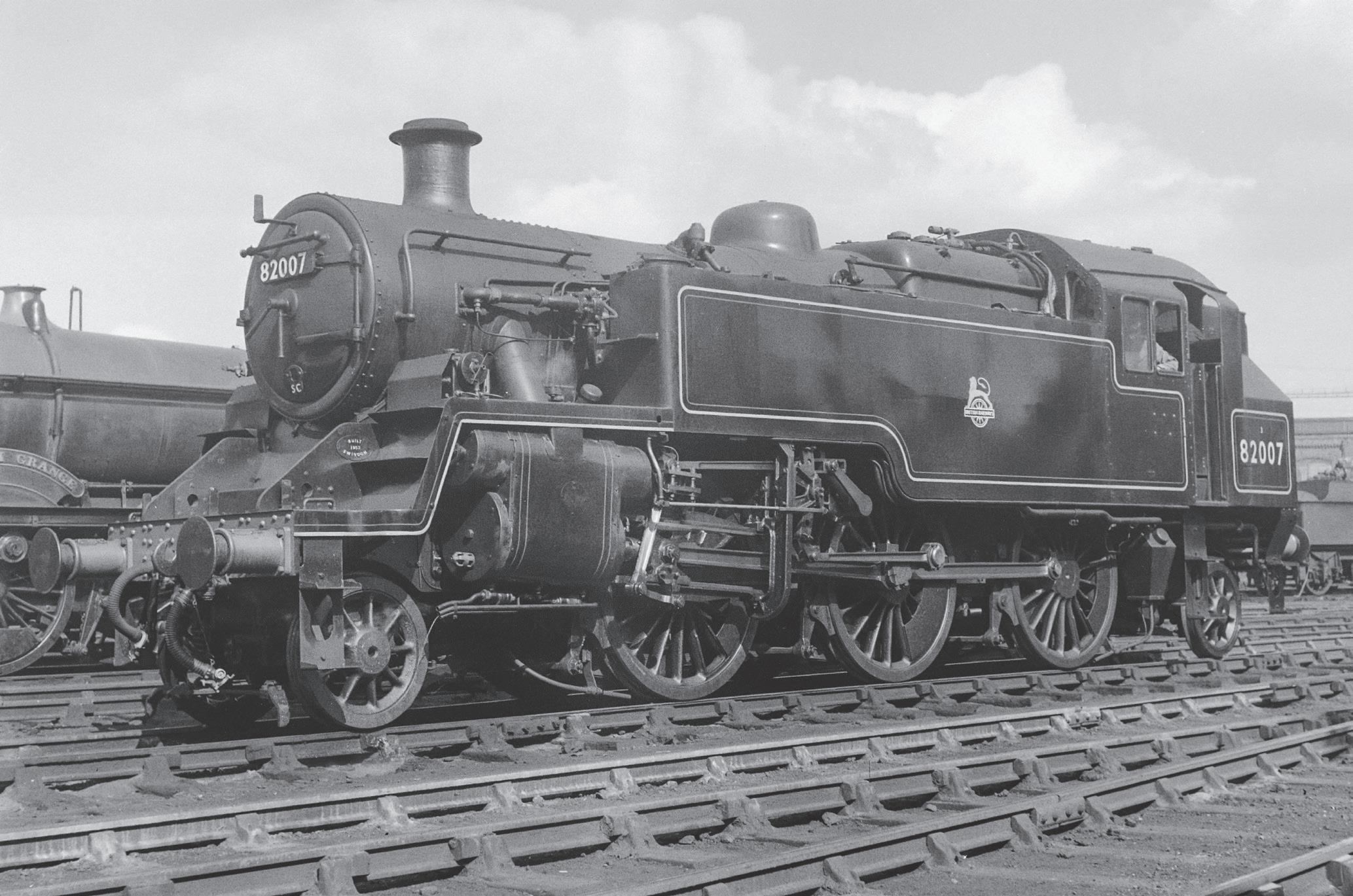
Having been completed on 30 May 1952 and looking resplendent in ex-Works condition, No 82007 is seen here at Swindon on 15 June 1952 prior to its initial allocation to Tyseley (84E) a few days later. The engine carries a ‘Built Swindon’ and year plate on the framing below the smokebox - see inset . Locomotives intended for the Southern Region had additional lamp irons fitted to the smokebox to carry that region’s route codes. As delivered No 82007 is in the attractive lined black livery but later examples repaired at Swindon would be repainted in unlined green. NS207841


One of the workhorses of the NER was this Class P3, later J27, No 65865 seen here working hard on the 1 in 125 incline of Stockton bank in 1952. It was a regular performer in this area, remaining at work until withdrawal as late as February 1967. Of interest in the background is the signal post with lower quadrant ex-NER signals still in evidence.
Also on Stockton Bank near Norton South signal box is ex-NER Class R, later class D20, No 62347 with a local service for Sunderland. By 1952, the date of this image, many of this class of 4-4-0 had been withdrawn with the survivors eking out an existence on local trains and excursion services. This Northallerton based locomotive would be withdrawn a couple of years later in November 1954 after a working life of close on 55 years. Both David P Williams colour archive


RAILWAY TIMES is the twice-yearly journal covering the changes and events on British Railways year by year starting from 1948.
1952 was a year marred by the tragedy of the Harrow & Wealdstone accident which saw great loss of life and many injuries not to mention the writing off of the former Turbomotive recently converted as No. 46202 Princess Anne. The scale of branch line closures since Nationalisation is reviewed and several of the lines affected are featured. On a more positive note the experimental ACV railcar units were trialled as precursors to the later DMU programme that would revolutionise branchline economics and further examples of the new Standard locomotive designs rolled off the production lines. Important centenaries were marked this year celebrating 100 years of King’s Cross station and of the completion of the former GNR mainline.
These and many more aspects of the railway scene in 1952 are featured in this issue.
£12.95

